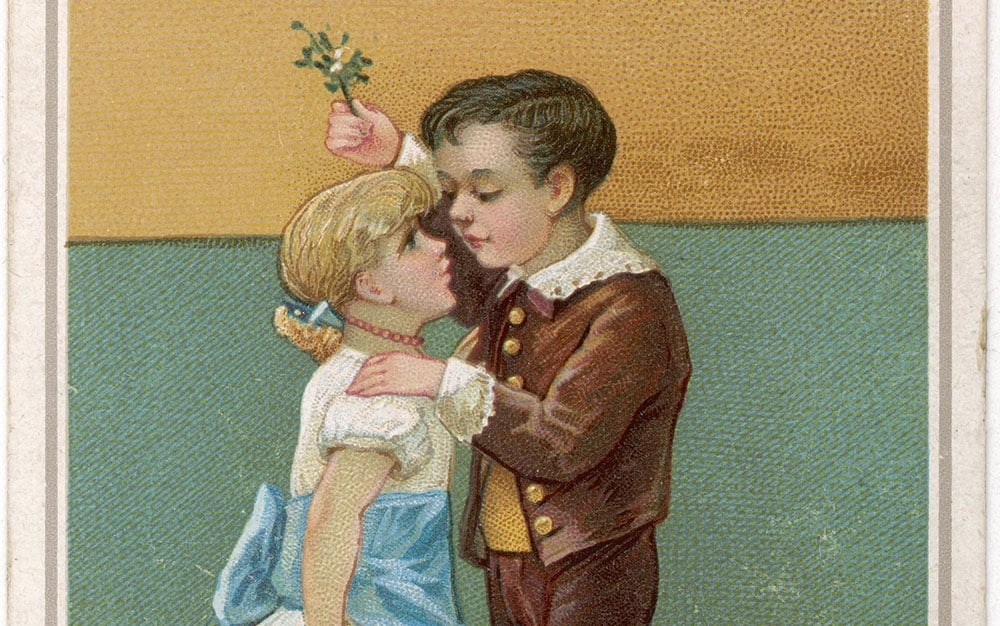Mistletoe is a traditionally festive plant that we use to adorn our doorways with at Christmas.

In the past, the lush evergreen leaves and plump white berries were thought to be linked with fertility, which is why we kiss under sprigs of mistletoe.
Whilst it makes a lovely indoor decoration as well, there is something slightly magical about spheres of evergreen mistletoe growing wild in bare trees over winter.
Growing your own isn’t easy, but it’s a great experiment to try and will look spectacular if you pull it off.
How to: Grow Mistletoe
Mistletoe is a parasitic plant which needs another tree to live on.
This means it absorbs its nutrients from the branches of its host tree, but unlike most parasites, mistletoe doesn’t kill the host plant.
It may weaken the host, but the two plants can live in happy harmony as long as you keep it under control.

Tip:
If you can’t gather wild
mistletoe, you can buy
growing kits which contain
mature berries.
When mistletoe grows in the wild, the seeds are spread by birds who eat the berries and then helpfully ‘drop’ the seeds later on when sitting on a branch.
To spread the seeds ourselves we need to harvest berries in March or April, from mistletoe which has been well established on a tree – don’t use berries from shop bought mistletoe as these are harvested before the seeds are mature enough to germinate.
Step One
Choose an appropriate tree for your mistletoe, Apple is a common host tree but lime and poplar also work well. Mistletoe needs lots of sunlight to get going so try to find a tree that gets plenty of light throughout the day.
Your host tree should ideally be at least 15 years old and well established. Bear in mind that it will suck some of the nutrients out of the branch and can reduce fruit yields.

Step Two
Tip:
Sow several seeds in each
cut, as roughly only 1 in 10
seeds will germinate.
Choose a branch on your host tree that is at least 10cm thick and very high up, so it gets lots of light.
Make a shallow slice in the branch to lift up the bark. Remove the seed from the berry and place it underneath the bark flap.
Keep the cut as small as possible to avoid getting an infection in the wood.
Step Three
Wrap the flap with sacking or hessian to seal it and protect the seed from being eaten by birds.
The branch will swell if the seeds germinate, but it can be a few years before it reaches a large size. With a bit of luck, you’ll be kissing under your home-grown mistletoe next Christmas!


i would love to grow my own mistletoe. i miss it, we use to have it hung somewhere in our home every Christmas. now you can not even buy it at stores you have to order it. some things and traditions don’t need to change.
Me too-going to try to grow it !!!!!!!!!!!!!!!!